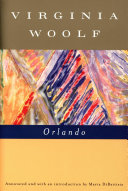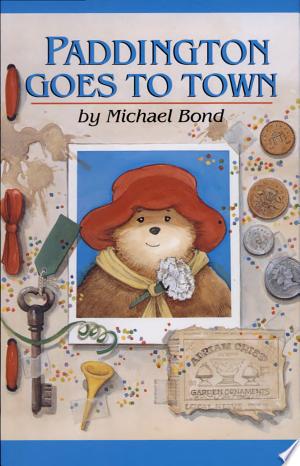Estimated read time: 5 min read
One Sentence Summary
A gender-shifting protagonist navigates through time and identity in this daring exploration of love and self-discovery.
Table of Contents
Introduction
In Virginia Woolf's highly acclaimed novel "Orlando," readers are taken on a fantastical journey through time and space as they follow the life and transformations of the titular character. First published in 1928, this fictional biography defies traditional literary norms and explores themes of gender, identity, and the fluidity of time. With its lyrical prose and innovative storytelling, "Orlando" continues to captivate readers and challenge societal conventions.
Brief Synopsis
"Orlando" begins in the Elizabethan era with protagonist Orlando, a young nobleman serving as a favorite of Queen Elizabeth I. As the story unfolds, readers witness Orlando's journey as they encounter numerous transformations in gender and time. After a brief period of infatuation with a Russian princess, Orlando suddenly finds themselves waking up in Constantinople transformed into a woman.
Throughout the centuries that follow, Orlando experiences the challenges and societal limitations placed upon them based on their gender. The narrative takes readers from the world of Elizabethan England to the 18th century, the Victorian era, and finally the post-World War I period. Along the way, Orlando meets various historical figures and engages in deep introspection about their own identity and place in the world.
Setting
"Orlando" is set across several historical periods, each vividly depicted by Woolf's lyrical descriptions. The novel begins in Elizabethan England, with its grand palaces, courtly intrigues, and high society. From there, the story moves to Constantinople, capturing the vibrant and diverse atmosphere of the Ottoman Empire.
As the narrative progresses, readers are transported to 18th century London, with its bustling streets, literary salons, and aristocratic society. The Victorian era is depicted with its strict societal norms, large estates, and the emergence of women's suffrage movements. The novel concludes in the early 20th century, reflecting the aftermath of World War I and the shifting societal attitudes.
Main Characters
| Character | Description |
|---|---|
| Orlando | The protagonist of the novel, Orlando undergoes a remarkable transformation from a nobleman in the Elizabethan era to a woman. |
| Queen Elizabeth I | A key figure in Orlando's early life, Queen Elizabeth I plays a significant role in shaping Orlando's identity and experiences. |
| Sasha | A Russian princess with whom Orlando falls in love, Sasha becomes a catalyst for Orlando's gender transformation. |
| Nick Greene | A poet and close companion of Orlando during the Elizabethan era, Nick Greene embodies the creative and bohemian spirit of the time. |
Themes and Insights
Gender and Identity
One of the central themes in "Orlando" is the exploration of gender and identity. Through Orlando's shifting experiences as both a man and a woman, Woolf challenges societal conventions and explores the complexities of gender identity. By blurring the boundaries between male and female, Woolf highlights the fluidity of gender and the limitations imposed by societal expectations.
Time and History
Woolf uses the element of time to profound effect in "Orlando." By spanning centuries, the novel raises questions about the nature of time and its impact on personal and societal change. The protagonist's unaging presence throughout history reflects the impermanence of human existence, inviting readers to reflect on the passage of time and its influence on individuals and civilizations.
Self-Expression and Creativity
Through Orlando's artistic pursuits and interactions with various writers and artists, "Orlando" explores the theme of self-expression and the role of creativity in shaping one's identity. Orlando's journey as a writer reflects the struggle to find one's authentic voice and the liberating power of artistic expression.
Freedom and Limitations
The novel delves into the concept of freedom and the limitations imposed by societal structures. Orlando's experiences as both a man and a woman reveal the stark differences and challenges faced within each gender. The narrative highlights societal expectations, particularly for women in different historical periods, and the constraints that hinder personal growth and self-realization.
Reader's Takeaway
"Orlando" is a captivating and thought-provoking novel that pushes the boundaries of traditional storytelling. The exploration of gender, identity, time, and creativity challenges readers to question societal norms and reflect on their own understanding of self. Through Woolf's lyrical prose and innovative narrative style, readers are compelled to consider the fluidity of gender and the transformative power of individual expression.
Conclusion
Virginia Woolf's "Orlando" is a literary masterpiece that defies conventions and continues to resonate with readers today. Through the life and transformations of the titular character, the novel explores profound themes of gender, identity, and the passage of time. With its rich historical settings and thought-provoking insights, "Orlando" offers readers a unique and engaging reading experience that encourages introspection and challenges societal norms.
Orlando FAQ
What is the plot of Orlando?
Orlando is a novel by Virginia Woolf that follows the life of an English nobleman named Orlando who lives for several centuries, transforming from a man into a woman during the course of the story.
Who is the author of Orlando?
The author of Orlando is Virginia Woolf.
When was Orlando first published?
Orlando was first published in 1928.
Is Orlando based on a true story?
No, Orlando is a work of fiction and is not based on a true story.
What is the significance of Orlando changing from a man to a woman in the story?
The transformation of Orlando from a man to a woman represents a exploration of gender and identity, reflecting Virginia Woolf's own views on gender fluidity and the construct of gender roles.
Is Orlando a historical novel?
While Orlando does contain historical elements and references, it is not solely a historical novel. It blends elements of fantasy and satire with its historical context.
What themes are explored in Orlando?
Some of the main themes explored in Orlando include gender identity, time and transformation, love and sexuality, as well as the role of art and literature in society.
Is Orlando a challenging read?
Orlando can be seen as a challenging read due to its complex narrative structure and literary experimentation. However, many readers find it an enjoyable and thought-provoking novel.
Has Orlando been adapted into a film?
Yes, Orlando has been adapted into a film. The 1992 film adaptation was directed by Sally Potter and starred Tilda Swinton in the title role.
Is Orlando considered a feminist novel?
Yes, Orlando is often considered a feminist novel due to its exploration of gender roles and the portrayal of a strong and independent female protagonist.





